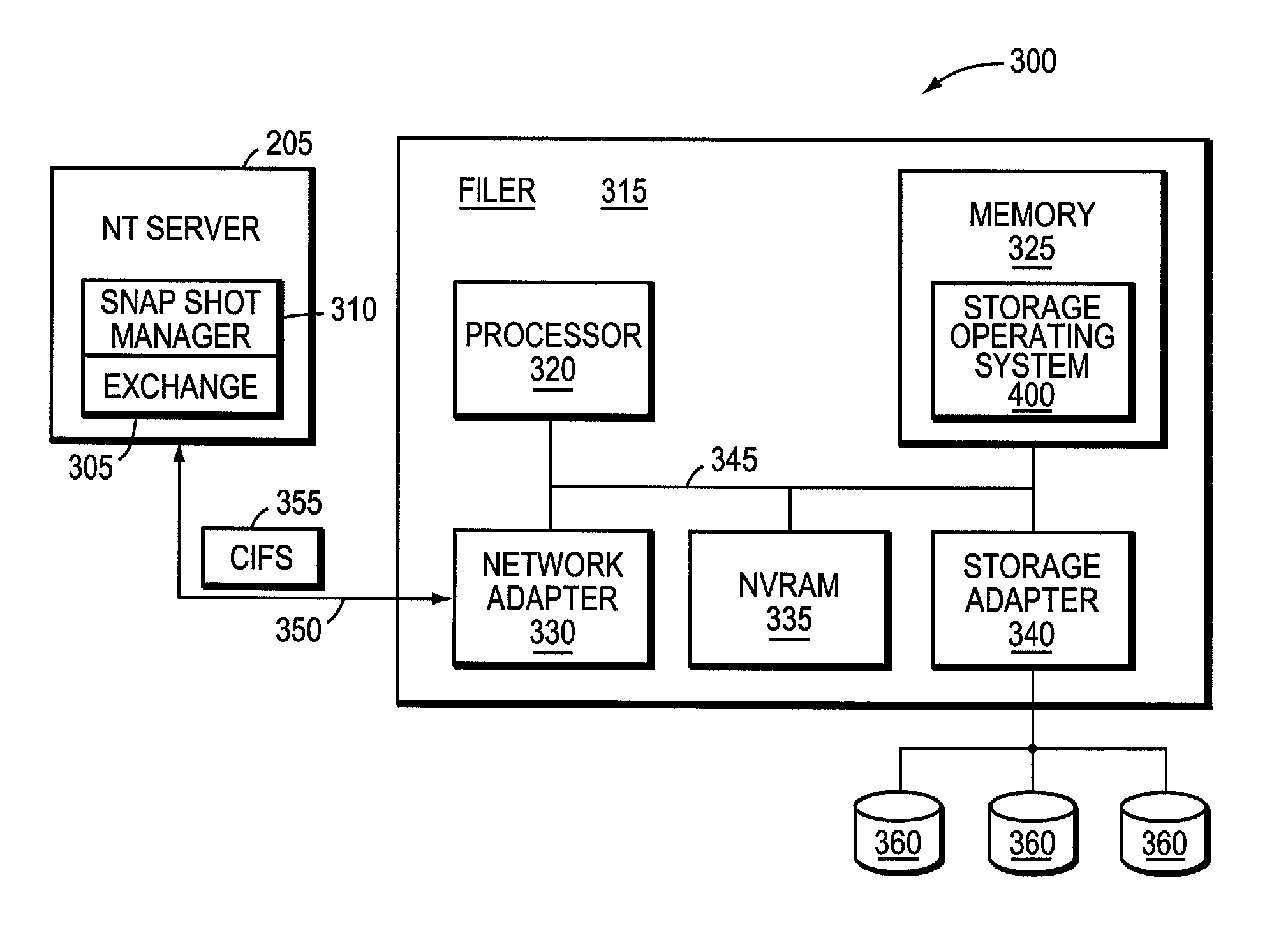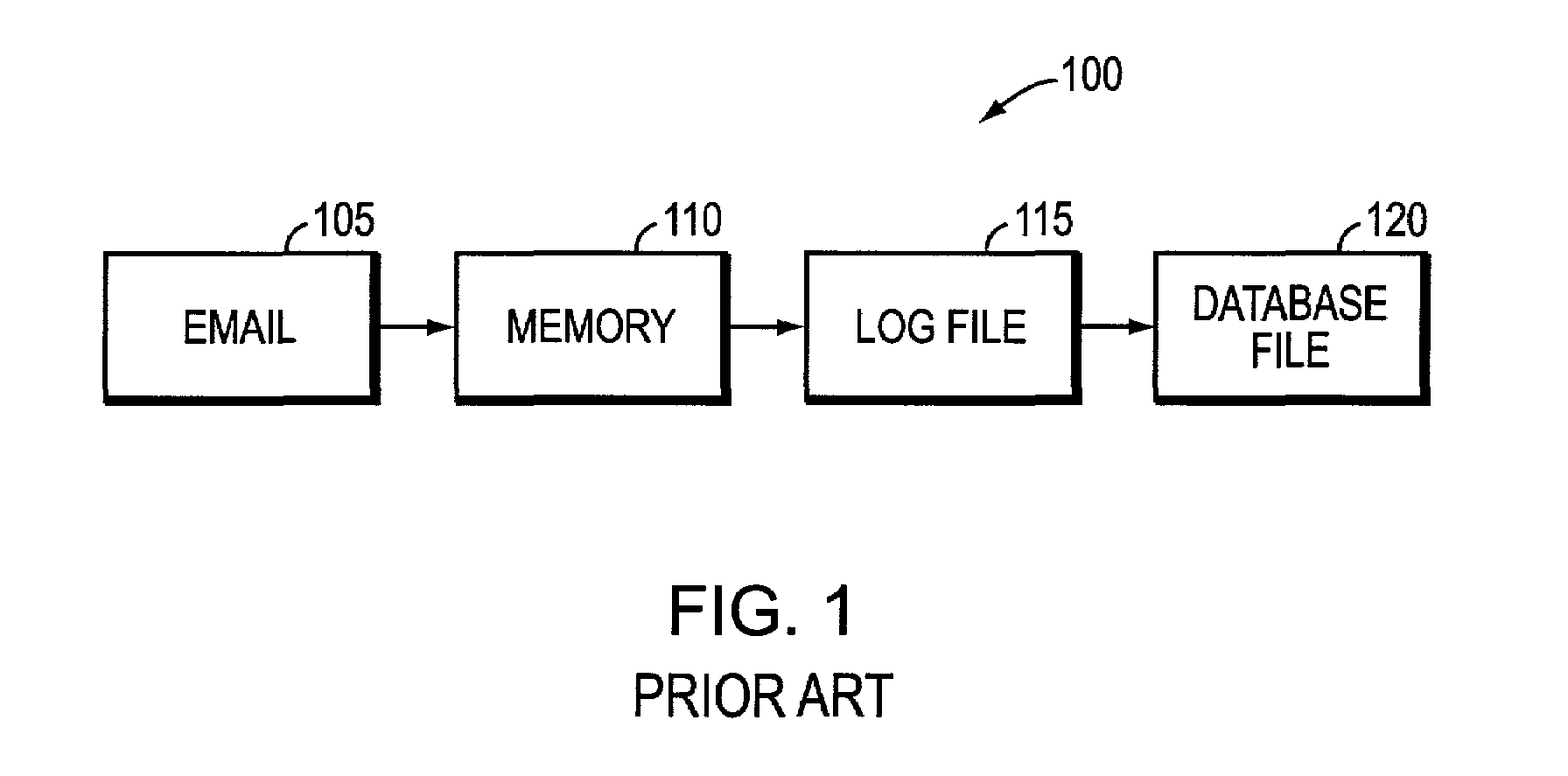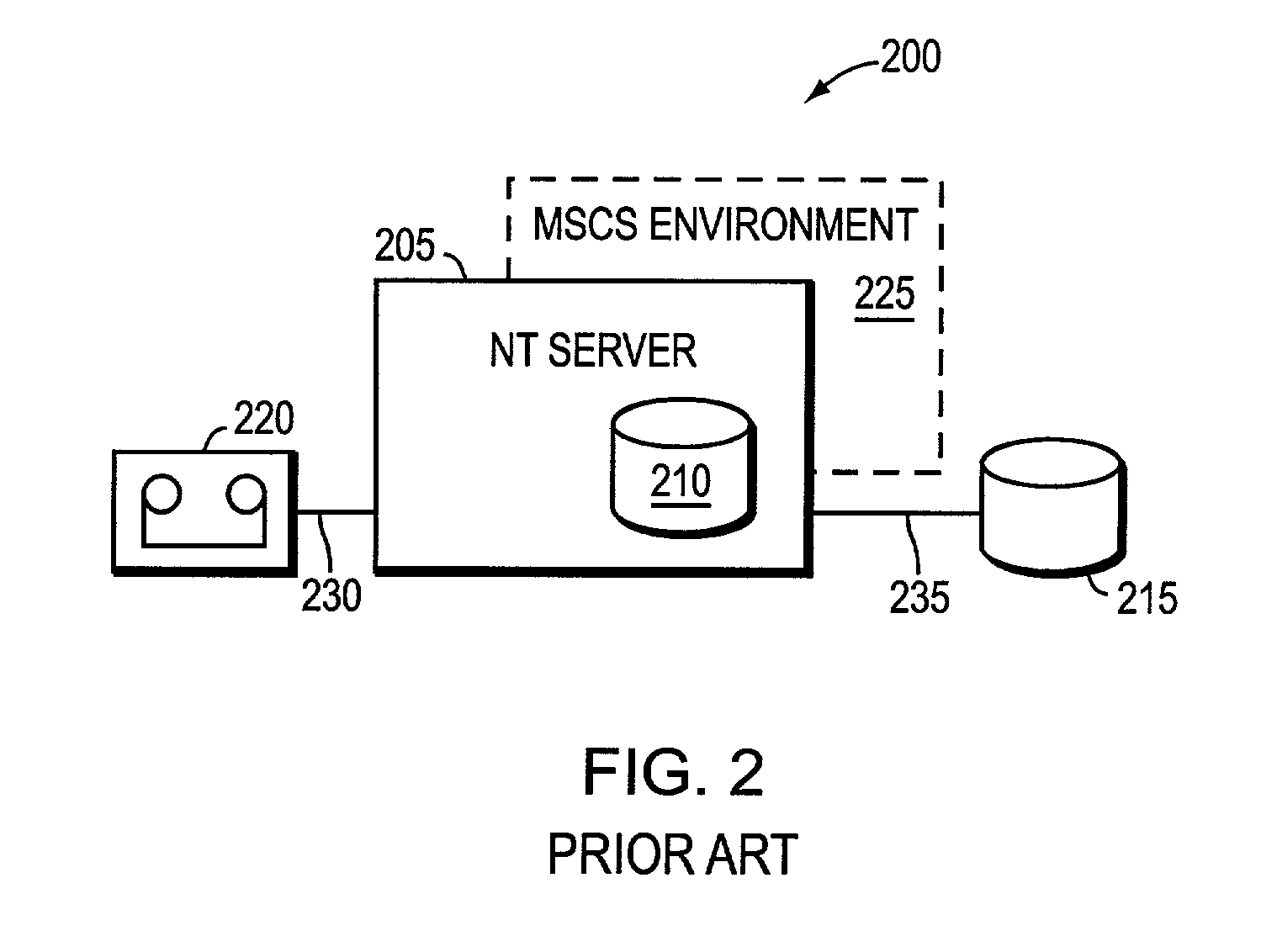System and method for creating a point-in-time restoration of a database file
a database and point-in-time technology, applied in the field of database restoration, can solve the problems of consuming a significant amount of time for backup/restore operations, increasing the time required to perform backup/restore operations to a tape device, and preventing data loss
- Summary
- Abstract
- Description
- Claims
- Application Information
AI Technical Summary
Benefits of technology
Problems solved by technology
Method used
Image
Examples
first embodiment
[0054]FIG. 8 is a flow chart detailing the procedure 800 performed in restoring the database files from a validated backup in accordance with the invention. This procedure is performed after the database server has been taken off-line so that new data is not being written to into the database files. In step 805, the user selects the backup to restore from. This selection can occur via a command entered on a command line interface (CLI), or via an option selected from a graphical user interface (GUI) or any other input methodology. Once the backup to restore from has been selected, in step 810, the selected backup is verified. This verification ensures that the database files contain within the snapshot information are not corrupted and are valid. If the selected backup was previously verified when it was created (see step 535 of FIG. 5), the backup is not re-verified. Instead, a determination is made whether the previous verification was successfully completed. Next, in step 815, th...
second embodiment
[0055]FIG. 9 is a flow chart detailing the procedure 900 performed by the process to restore a validated backup and all newer log files in accordance with the invention. This process is performed by the process after the database server has been taken off-line. In step 905 the user or administrator selects a backup to restore from. This backup should include both the actual backup or snapshot to restore from. Next, in step 910, the selected backup is verified. Similarly to step 810 (FIG. 8), if the backup was verified when created, a check is performed that the previous verification was successfully performed. Then, in step 915 the log files associated with the selected backup are verified. Additionally, all the log files associated with all backups that are newer than the selected backup are verified (step 920). Then, in step 925, the databases and log files from the snapshot and snapinfo associated with the selected backup are moved to the live file system. Then, all log files new...
PUM
 Login to View More
Login to View More Abstract
Description
Claims
Application Information
 Login to View More
Login to View More - R&D
- Intellectual Property
- Life Sciences
- Materials
- Tech Scout
- Unparalleled Data Quality
- Higher Quality Content
- 60% Fewer Hallucinations
Browse by: Latest US Patents, China's latest patents, Technical Efficacy Thesaurus, Application Domain, Technology Topic, Popular Technical Reports.
© 2025 PatSnap. All rights reserved.Legal|Privacy policy|Modern Slavery Act Transparency Statement|Sitemap|About US| Contact US: help@patsnap.com



